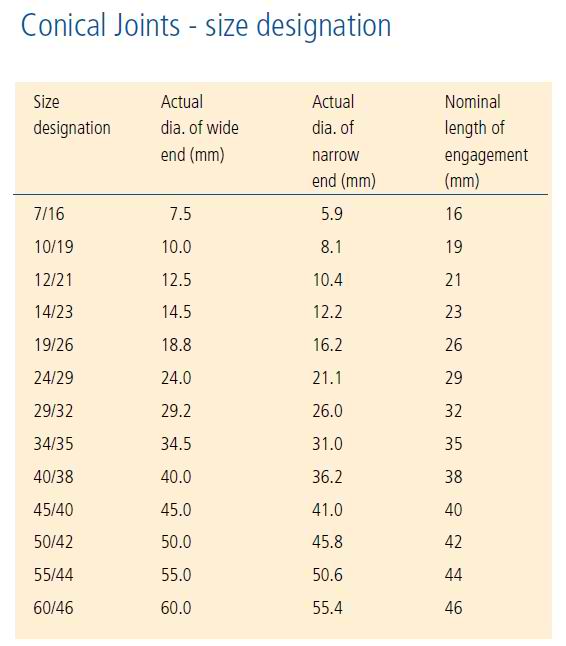Glassware, Conical Joint Sizes Explained
Ground glass joints are used in laboratories to quickly and easily fit leak-tight apparatus together from commonly available parts. Some laboratory bottles like Volac Reagent Bottles can also come with standardised conical joints & stoppers in plastic or glass*.
Ground glass joints can be precisely ground to a reproducible taper or shape. They are made to join two glassware pieces together. One of the glassware items to be joined would have an inner (or male) joint with the ground glass surface facing outward and the other would have an outer (or female) joint of a correspondingly fitting taper with the ground glass surface facing inward.
The conically tapered ground glass joints typically have a 1:10 taper and are often labeled with a symbol consisting of a capital T overlaid on a capital S, meaning "Standard Taper". This symbol is followed by a number, a slash, and another number e.g. 24/29. The first number represents the outer diameter (OD) in millimeters (mm) at the top (widest part) of the inner joint. The second number represents the ground glass length of the joint in millimeters.
The most common US joints are 14/20 and 24/40. These sizes apply only to glassware in the US. There are also European ISO standard joints with common joint sizes of 5/13, 7/16, 10/19, 12/21, 14/23, 19/26, 24/29, 29/32, 34/35, 45/40, 60/46, 71/51 and 85/55. The US and ISO joints differ only in the length not in the slope, and some can be used in combination.


